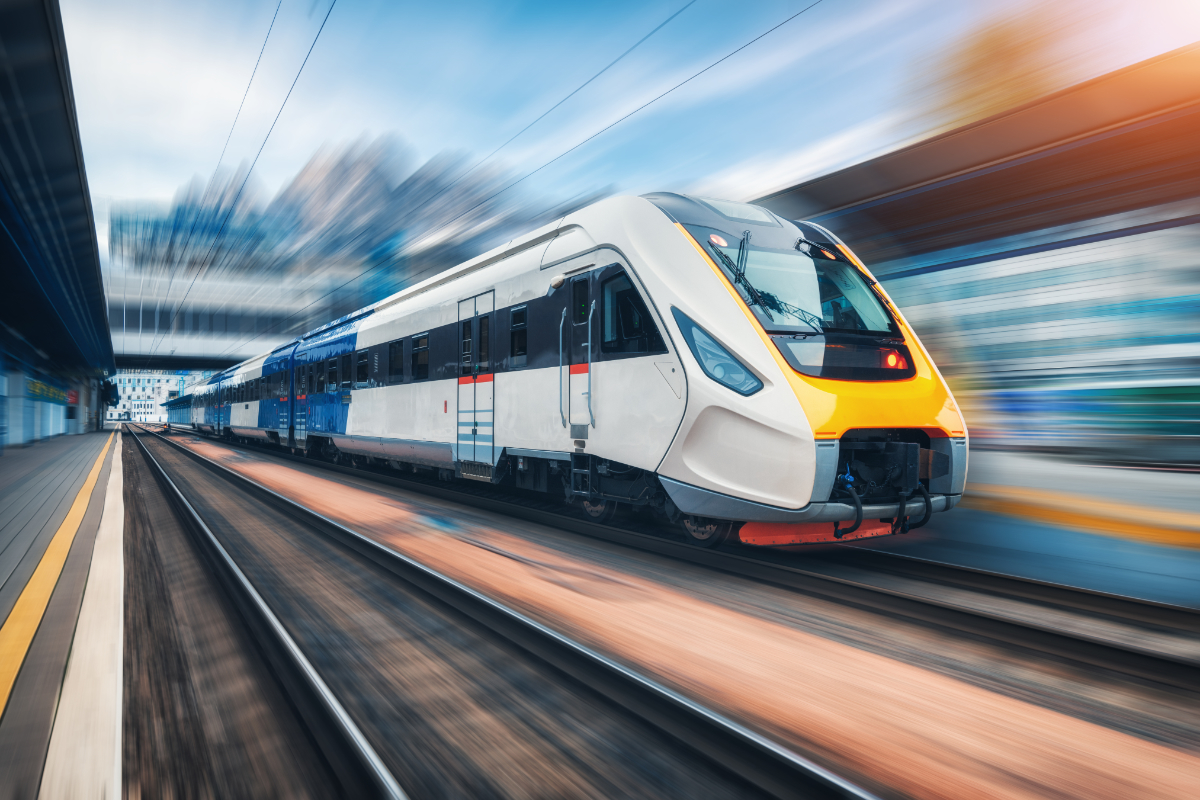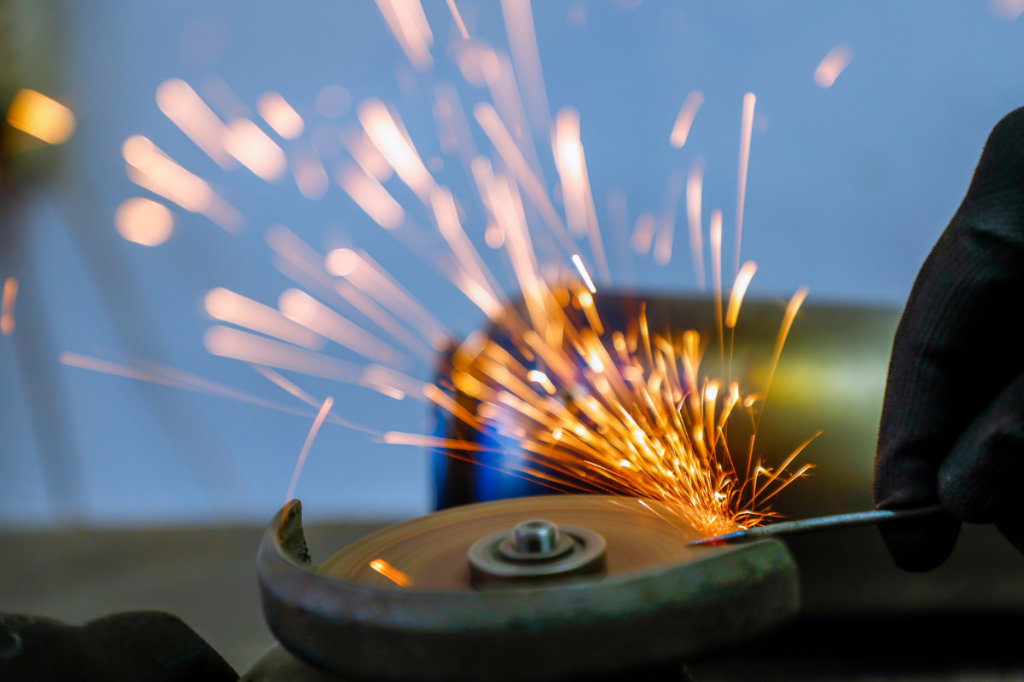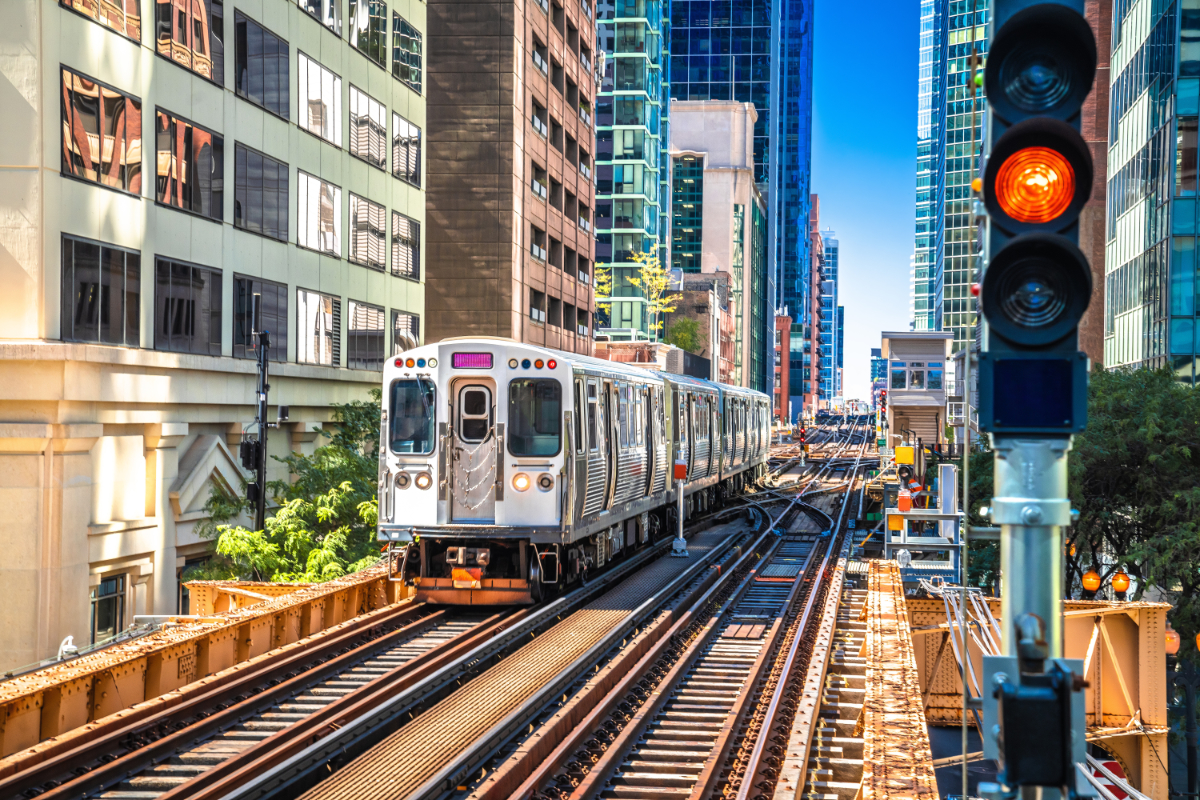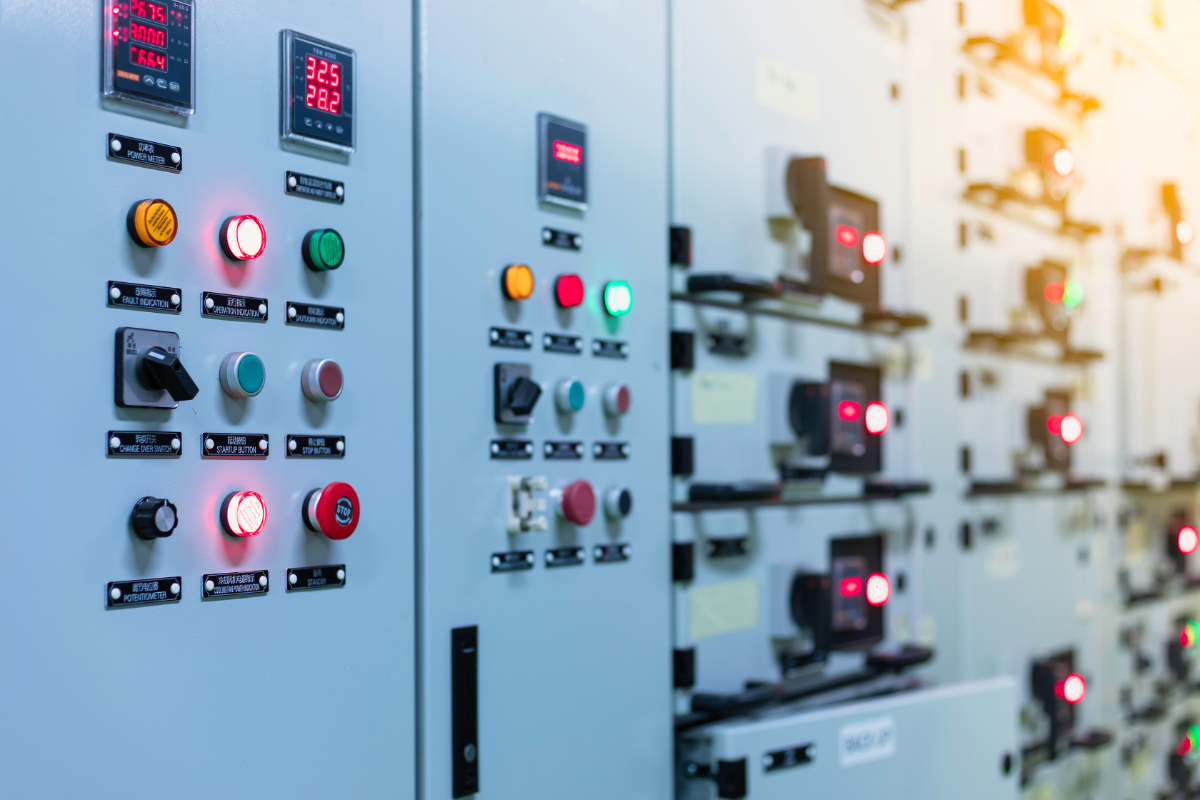
The United States has experienced significant population growth and urban sprawl in the past few decades, fueling an increasing demand for intercity and interstate travel. However, America’s historical reliance on cars and airplanes for long-distance travel poses significant environmental challenges. Thus, there is an urgent need to modernize the country’s electrified transit infrastructure to compete globally with other nations.
High-speed rail will be a crucial part of this modernization. Offering faster, greener, and more efficient travel, high-speed rail enables enhanced connectivity between major urban centers and underserved regions. It has the potential to radically transform regional economies and reduce carbon footprints.
How High-Speed Railways Work
High-speed rail refers to railroads that run much faster than standard trains, typically 155 mph to 220 mph. This is achieved on dedicated tracks with minimal grade crossings and uses advanced signaling and control systems to ensure safety and efficiency. In this section, we will explore how high-speed railways work.
Electric Power Systems
High-speed railways typically operate on overhead catenary systems, with overhead wires supplying electricity to trains via an apparatus mounted on the trains known as a pantograph. To learn more about catenary systems and how they work, read our blog post.
High-speed rail systems rely on consistent power to maintain speed, ensure safety, and adhere to demanding schedules. Power interruptions can lead to service delays, stranded passengers, operational inefficiencies, and significant cost implications for operators.
Continuous power prevents disruptions in critical systems such as propulsion, braking, and onboard controls. It also ensures the functionality of essential safety systems, including signaling, communication, and emergency braking mechanisms. Any power failure could compromise operators’ ability to safely decelerate their trains, which could be catastrophic at the high speeds these systems run. A consistent power supply allows for the smooth operation of regenerative braking systems, which recapture energy during deceleration and feed it back into the grid or train systems.
Additionally, avoiding power interruptions minimizes equipment wear and tear, reducing maintenance costs and extending the lifespan of critical components.
Track and Infrastructure Requirements
Dedicated, straightened tracks are essential for high-speed railways to minimize speed limitations due to curves or grade changes. Advanced materials such as prestressed concrete and continuously welded rails can reduce wear and tear.
Even with the best materials and ideal design conditions, regular maintenance and inspection are essential to ensure safety and optimal performance.
Train Design and Aerodynamics
High-speed railway train sets tend to have sleek, streamlined shapes that reduce drag and noise. Lightweight materials such as aluminum alloys and carbon fiber enhance energy efficiency, and regenerative braking systems recapture and reuse energy during deceleration.
Control and Communication Systems
High-speed railways use advanced traffic management systems for real-time tracking and coordination. These systems also have built-in fail-safe mechanisms to prevent collisions and ensure smooth operations in the event of an unforeseen fault.
Benefits of High-Speed Rail in the U.S.
There are numerous benefits to high-speed rail in the United States. When properly implemented, it can benefit individuals, strengthen American society, and contribute positively to the environment.
Environmental Impact
High-speed rail has the potential to greatly reduce carbon dioxide emissions by shifting Americans’ travel demand from cars and planes to trains, which are far more environmentally friendly. In the short—to medium-term future, there are also opportunities to integrate renewable energy sources into high-speed rail systems.
Economic Growth
Implementing high-speed rail will directly create jobs during the construction and operational phases. Engineers, technicians, and service personnel will all be required. In addition, it could boost tourism and commerce in the areas connected by high-speed rail. Over time, it is likely to lead to increased property values and regional economic development along rail corridors.
Passenger Advantages
High-speed rail will allow passengers to enjoy faster travel times and reduce stress compared with driving or flying. Rail systems are also likely to be far safer than driving due to the advanced technologies, dedicated tracks, and fail-safe mechanisms. In addition, high-speed rail may offer enhanced amenities on board, including Wi-Fi, dining options, and spacious seating, for the comfort and enjoyment of passengers.
High-Speed Rail Around the World: Lessons for the U.S.
The United States is a relatively late adopter of high-speed rail compared with several other countries, including Japan, Europe, and China. In this section, we will consider some of the lessons the U.S. could learn from these existing systems.
Japan’s Shinkansen
Japan’s Shinkansen, introduced in 1964, is colloquially known in English as the bullet train. It is the world’s first high-speed rail system, known for its safety and punctuality. It uses magnetic levitation (maglev) technology for even faster speeds.
Europe’s TGV and ICE Systems
France’s TGV and Germany’s ICE have been two of Europe’s main high-speed rail services since the 1980s. The TGV also serves destinations in Belgium, Luxembourg, Germany, Switzerland, Monaco, Italy, Spain, and the Netherlands, while the ICE serves destinations in Austria, France, Belgium, Switzerland, and the Netherlands.
TGV and ICE have integrated with regional and commuter trains to offer passengers seamless travel, and the electrified rail infrastructure focuses on energy efficiency.
China’s CRH Network
Since its launch in 2007, China’s CHR network has expanded rapidly. CHR serves all of China’s provinces and, with around 24,000 miles of track, makes up about two-thirds of all the high-speed rail tracks in the world in commercial service as of 2020. The fastest CHR trains reach speeds of up to 350 kph (around 217 mph). The network also boasts an advanced ticketing system, enhancing passenger accessibility and convenience.
Technological Takeaways
Adopting technologies like maglev and hybrid propulsion systems will be essential for future high-speed rail networks in the U.S. to effectively reduce energy consumption. In addition, implementing centralized command centers and automated systems will help ensure safety.
The Current Landscape of High-Speed Rail in the U.S.
Various plans have been made to develop high-speed rail in the United States since the 1960s. However, despite being one of the first to have access to high-speed trains, the U.S. continues to lag behind many other countries in this regard.
Existing and Upcoming Projects
The California High-Speed Rail program is under development. Construction of the first phase began in 2015, but due to the cost, it is being built in sections. At the time of writing, however, the system is not open for passengers and is not expected to be until sometime between 2030 and 2033.
Texas plans to build the Texas Central Railway, which will ultimately connect Dallas and Houston using Japanese bullet train technology. This system is anticipated to open sometime in the early 2030s.
Finally, Amtrak is undertaking a 15-year plan to update its Northeast Corridor services, aiming to reduce travel times, connect to new areas, and make rail travel safer, more reliable, and more efficient by 2035.
Challenges Ahead for U.S. High-Speed Rail
The future looks potentially bright for high-speed rail in the United States, but several technological, financial, and political barriers remain before it becomes a reality.
Technological Hurdles
Ensuring compatibility between high-speed rail and existing rail networks will be essential to offer passengers a seamless and integrated experience, but it is far from simple due to the high costs associated with the cutting-edge materials and technologies required. In addition, addressing wear and tear in electrified systems for long-term reliability presents some complex technological challenges.
Financial and Political Barriers
Securing bipartisan support for funding and regulatory approvals is key to making high-speed rail a reality in the United States.
According to a Newsweek survey, 60% of respondents favored high-speed rail, while 7% opposed it. Democrats were slightly more likely to support the measures than Republicans, but only by a small margin—67% of those who voted for President Joe Biden were in favor, as were 59% of those who voted for former President Donald Trump.
Despite this wide and largely bipartisan public support, navigating public opposition, particularly around eminent domain issues, has made securing widespread political support for the measures challenging. In addition, the government must navigate the question of the high upfront costs versus the long-term economic and environmental benefits of high-speed rail.
The Future: Building a Robust High-Speed Rail Network
Ultimately, the vision for high-speed rail in the United States involves creating a nationwide network connecting major urban centers, reducing reliance on cars and planes, and connecting previously more isolated and rural locales. Potential corridors for major systems include the Midwest, Southeast, and Pacific Northwest.
Leveraging Advanced Technologies
The next frontier is advanced technologies such as magnetic levitation and autonomous rail systems. In addition, tools such as digital twins and predictive analytics will be essential for proactive maintenance and service optimization.
Collaborative Efforts
Strategic partnerships between federal and state governments, private investors, and engineering firms will be vital in bringing this vision of American high-speed rail to life. Companies like MAC Products are sure to play a key role in leading innovation, addressing technological challenges, and ensuring overall project success.
Sustainability Goals
Integrating solar and wind energy into rail power systems will help reduce carbon emissions and ensure that high-speed rail is a truly sustainable and environmentally friendly solution. Some have even proposed creating “green corridors” to promote biodiversity along rail lines.
MAC Products’ Role in Electrified Transit
Here at MAC Products, our team members have decades of combined experience and expertise in engineering and manufacturing for the electrified transit sector. Our expertise in power distribution systems, field services, and precision engineering positions the company as a key player in supporting high-speed rail projects, and we look forward to getting more involved with these essential projects over the coming years.
If you would like to learn more about our products, services, or anything else we have covered in this post, please contact us and a member of the team will be pleased to help.
Related Posts





